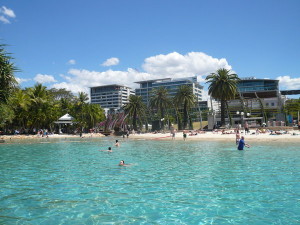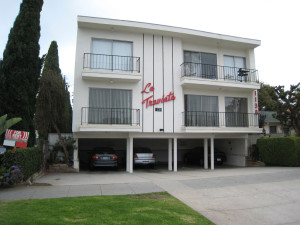Body corporate by laws and older buildings can be complicated. Records get lost and house rules are adopted but never recorded making a murky environment for purchasers.
If a portion of the common property has been set aside as exclusive use for a particular lot this allocation is recorded in the by laws.
It’s particularly important to get clear on exclusive use for older buildings. Lot owners, and strata managers, come and go, and exclusive use, such as parking spaces, can get swapped between owners without that change being recorded in the body corporate records.
It’s not uncommon for disputes to arise over who actually does have exclusive use of a parking spot, particularly if that spot is somehow special. Extra long spots are in great demand.
Finding Registered Body Corporate By Laws for Older Buildings
Queensland has second generation body corporate legislation which simply means that the legislation has been substantially reviewed and altered. That alteration was in 1997.
One of the biggest changes with the 1997 alteration was the introduction of the Community Management Statement (CMS) as a means to track changes in the body corporate by laws.
Changing By-Laws Before BCCM Act 1997
Prior to 1997 all body corporate’s were registered under the BUGT Act, and, when they were registered they were done so with the BUGT Act standard by-laws.
If a body corporate wanted to change from those by-laws then a Notificiation of Change of By Laws had to be registered. That notification would say something like:
- delete by laws 1 – 5
- amend by law 6 as follows and rename by law 1, …
- delete by laws 7 – 11
- add the following by laws …
Further amendments were made the same way: deleting or amending existing body corporate by laws or adding more. Which means a change in 1975 and another in 1982 and another in 1990 all need to be read together to understand what the by laws actually are.
It was, and still is, a cumbersome and costly process.
Introducing the Community Management Statement (CMS)
That whole system was wiped away with the enactment of the Body Corporate & Community Management Act 1997 and the introduction of the CMS.
The CMS includes the current by laws for the scheme.
Enacting, changing or deleting by laws requires a new CMS be registered. As soon as a new CMS is registered all previous CMS’s are obsolete.
Its a much simpler, cleaner system.
But, Not Every Scheme Has A CMS
Except of course when it’s not.
Buildings already registered prior to 1997 were given until July 15, 2000 to prepare and lodge a new CMS, if they chose to.
Many did not.
On the 15th July, 2000 the Department Natural Resources generated a “standard” CMS for those buildings. A sample Standard Community Management Statement can be seen here.
The standard CMS contains all the information that would be contained within a full CMS except the by laws. The by laws are those that were in effect at 13/07/2000.
For those schemes that had recorded changes to their by laws that would include ALL registered Notification of Change of By Laws.
For those that hadn’t that would be the standard by-laws contained in the BUGT Act.
BUGT Act Is Still In Force
Enacting the BCCM Act didn’t repeal the BUGT Act which remains active legislation today. Although a majority of the body corporates originally registered under the BUGT Act are now governed by the BCCM Act 1997 not all are.
 A body corporate, as defined in the BCCM Act 1997, can only be registered over freehold land. There are many different places throughout Queensland where the land is not freehold.
A body corporate, as defined in the BCCM Act 1997, can only be registered over freehold land. There are many different places throughout Queensland where the land is not freehold.
The most easily recognised example is South Bank in Brisbane. The land is actually owned by The South Bank Corporation a Queensland Government statutory corporation, meaning the land is State Land and cannot be sold.
The schemes within the South Bank precinct are built on leasehold land and are governed, in part, by the BUGT Act.
* * * * * *
Finding older body corporate by laws is a bit of a chore but it is doable. As with the Community Management Statements and building plans copies can be obtained from the Department Natural Resources & Mines.

 Unless stated otherwise all the information on this website relates to Queensland legislation.
Unless stated otherwise all the information on this website relates to Queensland legislation.